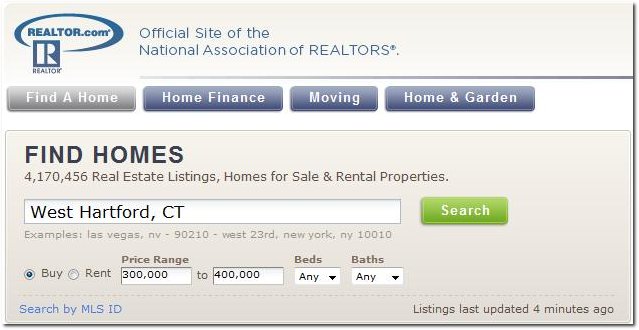You’re ready to sell your house and you’ve met with your agent to go over their pricing recommendation and marketing plan. The agent feels your house would be competitive in the market if it was priced anywhere between $290,000 and $300,000. So what do you choose as a listing price? There are lots of options, but the most popular choices in this situation would most likely be $299,000 or $299,900 or $300,000.
One aspect of pricing that most people don’t think about is how the price you choose affects the number of people that find your home through their internet searches. For example, let’s say you choose to price your home at $299,000 or $299,900. You want the psychological advantage of pricing your house just under $300,000, without much downside to you. There is an issue with this strategy when it comes to most real estate website searches though.
Pretend you’re a buyer. Most real estate websites use drop down menus to allow you to choose your price range when doing a property search. The values in the drop down menus are static (you can’t change them) and typically in increments of $10,000, $25,000, or $50,000. If I’m a buyer searching for homes up to $300,000, it’s perfectly fine if you price your house at $299,000 or $299,900. I’ll see the result. But what if I’m a buyer and I’m looking between $300,000 and $400,000? I won’t find your house because these static searches have blocked you out.

For example, right now in West Hartford, according to the MLS, there are 13 houses actively for sale between $290,000 and $300,000. One of these houses is priced at $300,000. Nine of these houses are priced between $299,000 and $299,900. Two of these houses are priced at $298,000. The 11 houses that are priced between $298,000 and $299,900 are missing all of the buyers that are starting their search at $300,000 on the web, while the one house priced at $300,000 is showing up for the buyers that are searching up to $300,000 and those with a price range starting at $300,000. Which seller do you think has more people finding them online? Which seller would you want to be?
Realtor.com recently updated their website and replaced their pricing drop down menus with text boxes. Unfortunately most people have been conditioned to search using the typical incremental values of $10,000, $25,000, and $50,000. Most buyers will not think to start their search at, say, $297,000 to pick up all of the properties that are priced at $299,000 or $299,900. Agents see this similar situation in the MLS. We have text boxes where we enter the price ranges when setting up property searches for our buyers. The agent needs to be astute enough to manually enter a starting price slightly below the buyer’s range in order to pick up properties ending in $XX9,000 or $XX9,900. Agents, like buyers, sometimes have tunnel vision and don’t necessarily do this. So the buyer is missing out on potential matches. One of which may be your home.
If your goal is to have as many buyers find your house as possible, it may be best to go against the conventional pricing psychology and choose the slightly higher price that starts with a bigger number. More people will find your home during their online searches. Besides, when I’m showing a house that’s priced at $299,900 and the buyer asks me how much it is, I say “$300,000″ because in reality, that’s what it is. You’re not really fooling anyone.

